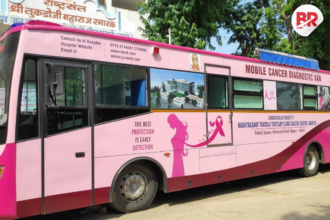
Union Health Minister JP Nadda has officially launched the National Zero Measles-Rubella Elimination Campaign 2025-26 during World Immunization Week (April 24-30). The goal is to completely eliminate Measles and Rubella in India by the year 2026.
Key Highlights:

- Awareness Materials Released: Posters, radio ads, and videos in multiple languages were shared with all states and union territories to raise awareness about the campaign.
- Free Vaccination: Under the Universal Immunisation Programme, two free doses of the Measles-Rubella (MR) vaccine are given to children:
- First dose: 9-12 months of age
- Second dose: 16-24 months of age
Why It Matters:
- Measles and Rubella are dangerous viral diseases that can cause serious health problems or even death, especially in children.
- These diseases spread quickly and can deeply affect families.
India’s Progress:
- MR vaccination coverage is high:
- First dose: 93.7%
- Second dose: 92.2%
- Measles cases have dropped by 73% and Rubella cases by 17% in 2024 compared to 2023.
- 332 districts have reported zero measles cases, and 487 districts have reported zero rubella cases from January to March 2025.
Recognition:
- India received the Measles and Rubella Champion Award in 2024 for its efforts in controlling the diseases.
JP Nadda urged:
- Health officials and ministers to organize public awareness meetings.
- Local leaders (MPs, MLAs, Panchayat heads) to get involved.
- Frontline workers to reach remote areas and ensure every child is vaccinated.
He stressed the importance of acting now to ensure success by 2026, just like India did with Polio and Tetanus elimination.
The Bigger Picture:
India runs one of the world’s largest vaccination programs, covering:
- 2.9 crore pregnant women and
- 2.6 crore newborns each year,
protecting them from 12 serious diseases.
The U-WIN digital platform is used to record vaccinations, issue certificates, and help parents book appointments.
Thanks to this program, the death rate of children under 5 has dropped significantly — from 45 per 1,000 births in 2014 to 32 in 2020.












